The Chicago bus network is the most utilized form of public transit in the city, and it does a lot to combat unequal opportunity. Recently the CTA has started a project looking into how the network could be improved.
The ever-constant Chicago wind blows down the street while a few people gather by the Belmont stop, waiting for the 146/Inner Lake Shore/Michigan Express bus. Service is regular, a bus scheduled to arrive approximately every 15 minutes, and the weather is pleasant.
From this stop, the bus will run straight down Lakeshore Drive before stopping again in the North Loop. It’s a popular and relatively busy route, an alternative public transit option to the ‘L’ for East Lakeview residents.
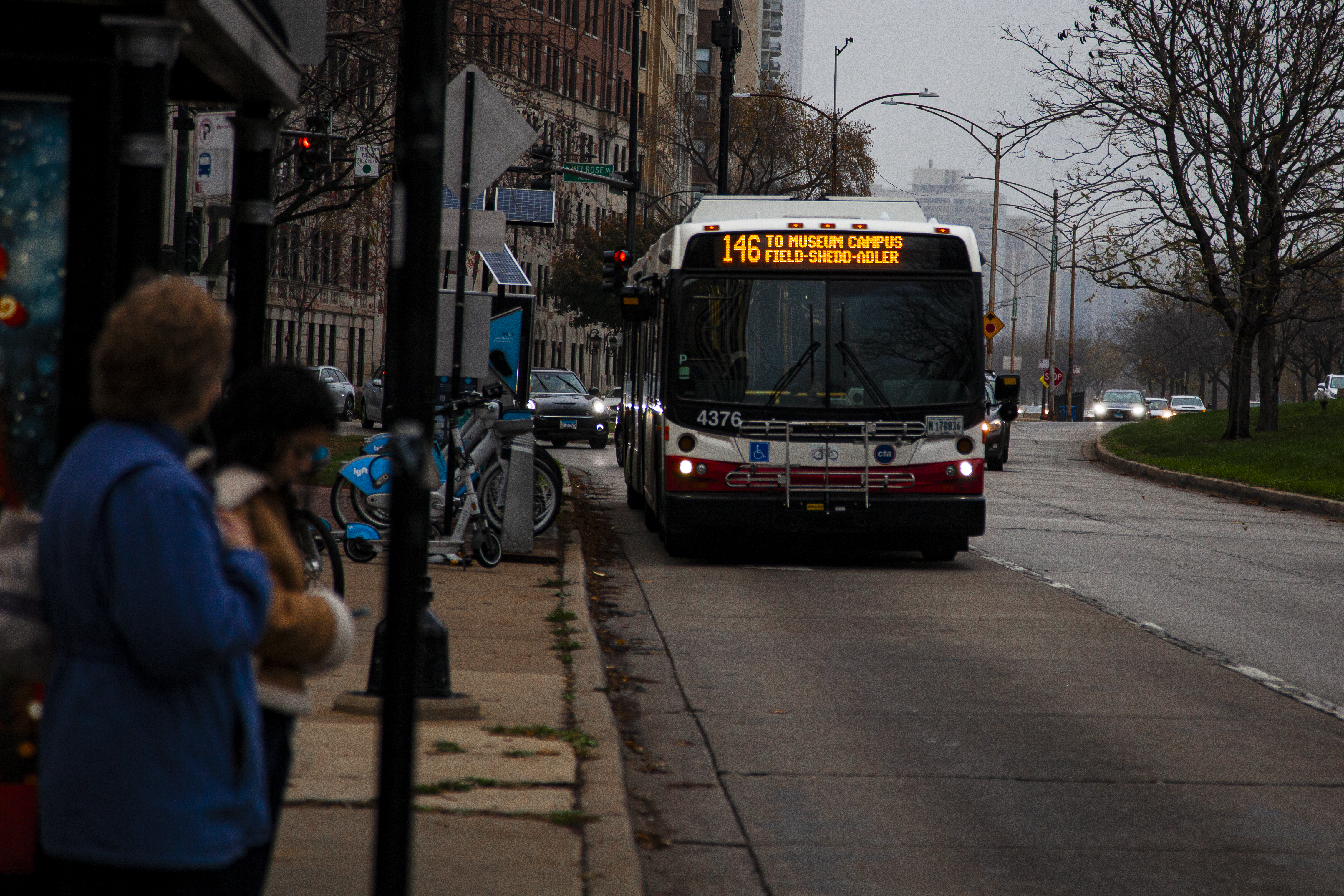
The southbound route 146/Inner Lake Shore/Michigan Express bus arrives at the Belmont stop in front of a waiting crowd on Thursday, November 14, 2024. (14 East Photo/Elliot Allison)
Susan, a regular bus rider, who asked that her last name not be used, was among the waiting crowd. When asked how she felt about the current bus system, she responded, “It’s okay, not as good as it used to be.”
She explained that post-recession budget cutbacks have been felt by the riders, but that she didn’t feel comfortable fully commenting on the effects, as she didn’t know the extent of the Chicago Transit Authority’s (CTA) funding.
Susan did not think it is important that riders know how the CTA is funded and to what extent. She also noted that the CTA has been making improvements. “I can check the time on my phone,” she said, “I was able to see a bus was coming in 8 minutes,” something she said is advantageous for regular riders.
“I can’t complain because of where I live,” she said when asked if there were any improvements the CTA could be making.
Don, an elderly resident of Lakeview who also requested that his last name not be used, commented on the lack of consistency with CTA buses. As a person who takes the bus every day, he said that the bus network is a “mostly effective system,” but that holes in service create problems.
“I get very frustrated when there’s a 30/45-minute wait, then three or four buses show up in a row,” Don said. Such delays are common with bus systems, which are often clogged by regular traffic and single-occupant vehicles.
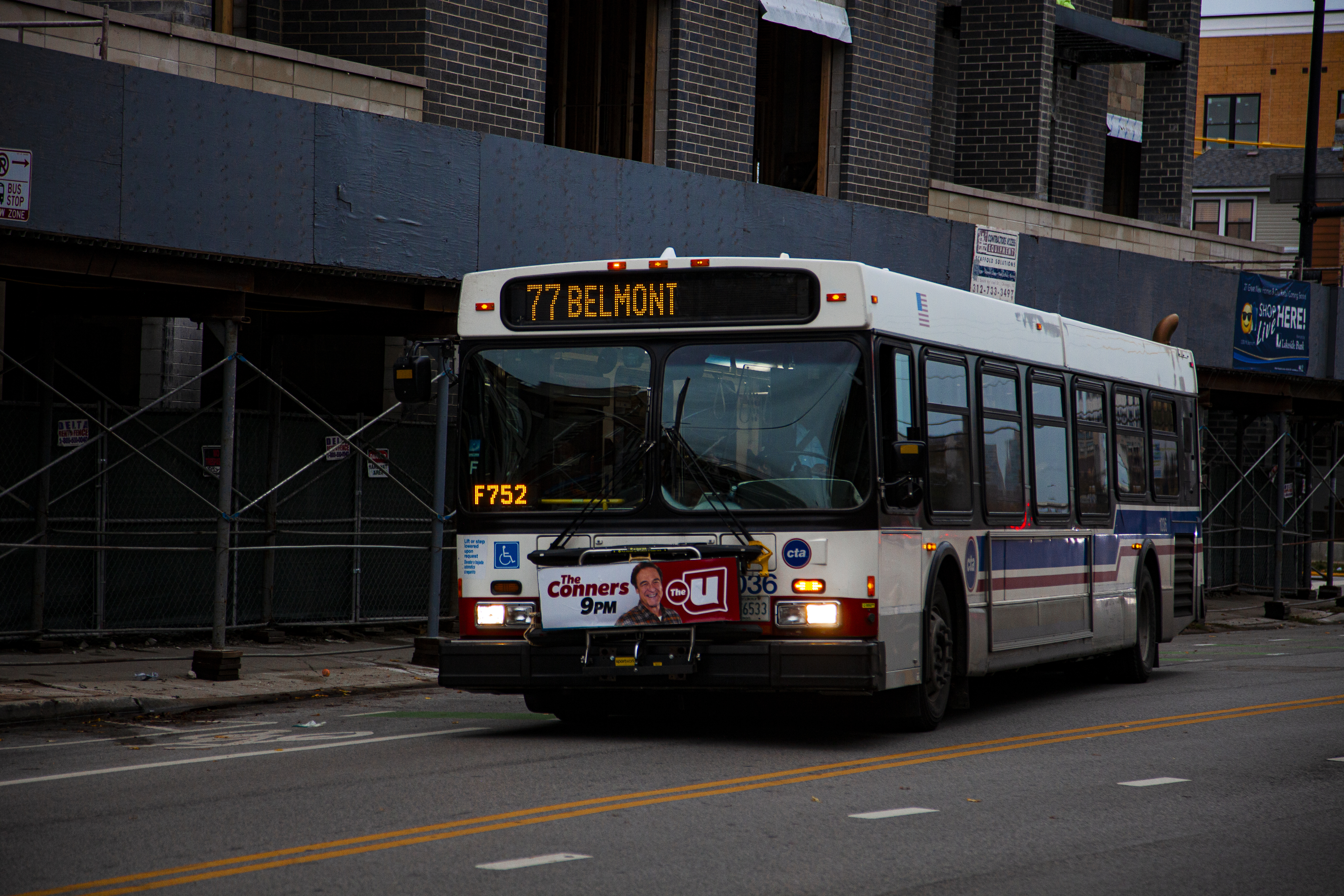
The westbound route 77/Belmont bus leaves the Belmont/Racine stop Thursday, November 14, 2024. (14 East Photo/Elliot Allison)
In December 2023, the CTA released a report stating the current situation of the bus network within the city, its uses, challenges, limitations and potential future. The report is part of the larger “Bus Vision Project,” (BVP) that will offer suggestions to CTA management to help restructure and revitalize the bus system in 2025.
Jennifer Henry, the resident CTA expert on the BVP, called bus service in Chicago “an underappreciated asset,” referring to it as “the workhorse” of public transportation. The train gets a lot of love in TV shows and movies set in the city, she said, but the bus is the real workhorse.
Henry described the project as stemming from the organization’s desire to look at bus service in a new way, from a broader perspective than the day-to-day system reviews that the CTA conducts to keep bus service regular by “taking a look at the system, taking a step back is important,” she said.
In addition to the Bus Vision Project, the city has created the Charging Forward plan — a bus electrification project — along with Better Streets for Busses, a collaboration with CDOT to improve bus right-of-way.
Potential recommendations from the BVP would need to fall within the service standards the CTA sets to maintain a comfortable and usable network of both trains and buses, Henry said. If resounding public support exists for a service change or shift that fits within those service standards, it could be a feasible step for the CTA.
The results of any potential change are very difficult to predict, she explained, as the project is still in its research phase. “[The] city of Chicago and the regions the CTA serve all stand to benefit,” Henry said. “The goal is to hear all perspectives.”
According to Henry, the public outreach phase is still in its preliminary stages, and the results of the survey that the CTA recently put out asking riders for their thoughts on the bus network are just the beginning. The program is currently scoping out a more robust public-outreach program to continue to reach more riders. Overall, however, she said outreach was going well.
The CTA is conducting the BVP review of the bus network following the large reduction in bus service in 2010 following the 2008 financial crisis. The reduced reliability of bus service caused a steady decline in bus ridership between 2012 and 2019, which was further exacerbated by the 2020 pandemic.
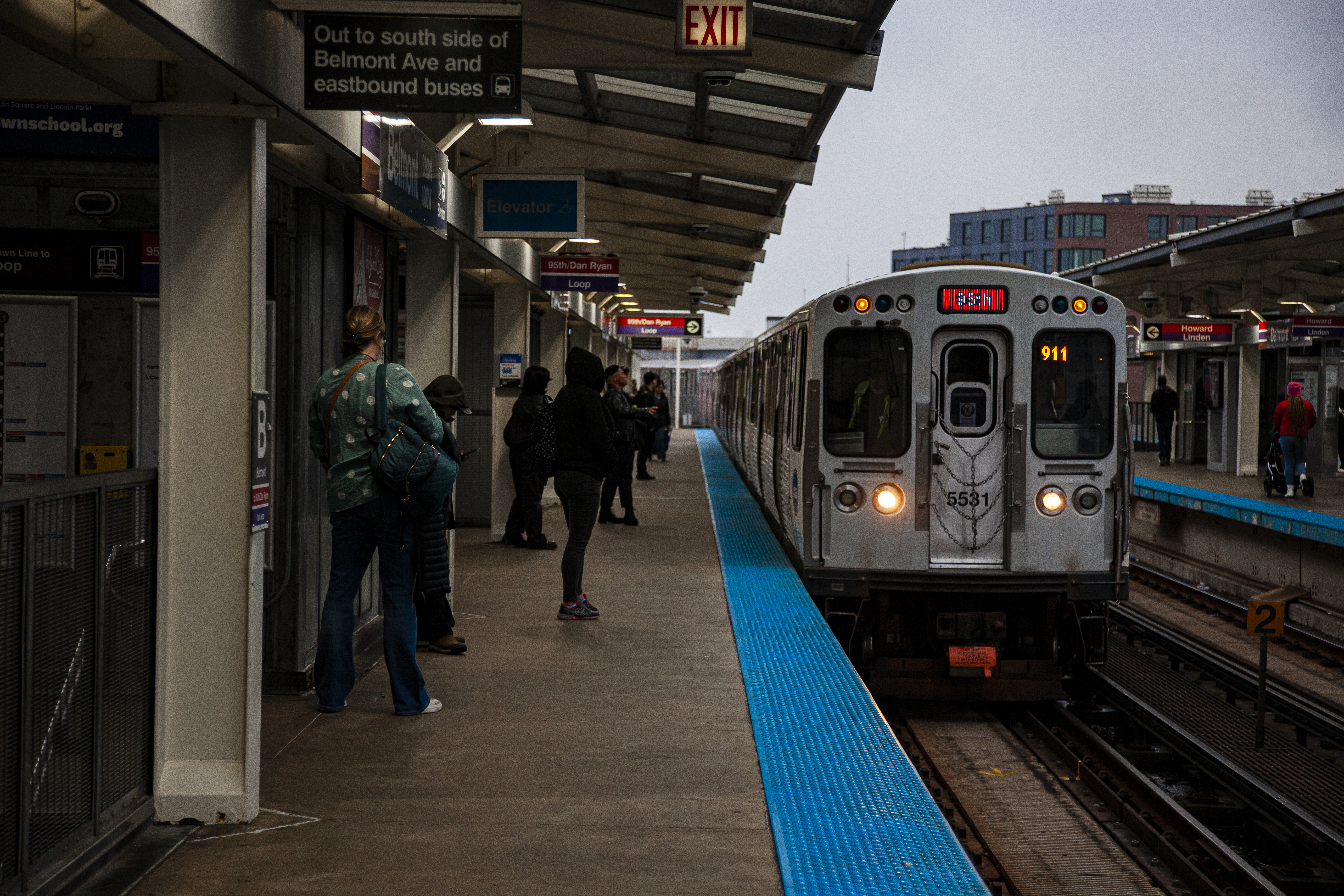
A 95th bound Red Line ‘L’ train arrives at the Belmont Station Thursday, November 14, 2024. Nearby train service is less common than nearby bus service in Chicago. (14 East Photo/Elliot Allison)
The 2023 framing report found that buses are the most available form of public transit in Chicago, with 96% of residents living within a half mile of a bus stop, compared to only 30% who live within the same proximity of a CTA rail station. This makes the bus a more utilized form of transit with 237 million annual riders compared to 218 million for rail, as measured during the 2019 peak. Additionally, the bus can be a more useful form of transportation, particularly to low-income neighborhoods, which are disproportionately located further from a CTA train station.
The bus system is depended on by many disadvantaged citizens of Chicago, and public transit does as much as possible to create equal opportunities in the city, given the boundaries of the geographical inequalities that were created in the past. The bus network achieves this by increasing access to jobs during rush-hour periods for residents who live away from rail service and their jobs, and providing access to stores and entertainment outside of working hours. For example, in 2019, public transit as a whole multiplied access to jobs by between 10 and 50 times for low-income neighborhoods.
Joseph Schwieterman, the director of the Chaddick Institute for Metropolitan Development at DePaul, said the CTA strives to reach out to lower-income neighborhoods, and the organization is doing a good job getting public opinion. Sometimes, however, the response rate for surveys is lower in low-income areas, which can further increase inequality, he said.
Schwieterman also drew attention to Chicago’s historic favoring of the ‘L’ rail system, something he said is “coming back to haunt us.” The CTA has a large project in place to improve Red and Purple Line rail service but lacks similar projects for express buses, he said. Several projects for further express bus implementation do exist, but they are still in a preliminary phase.
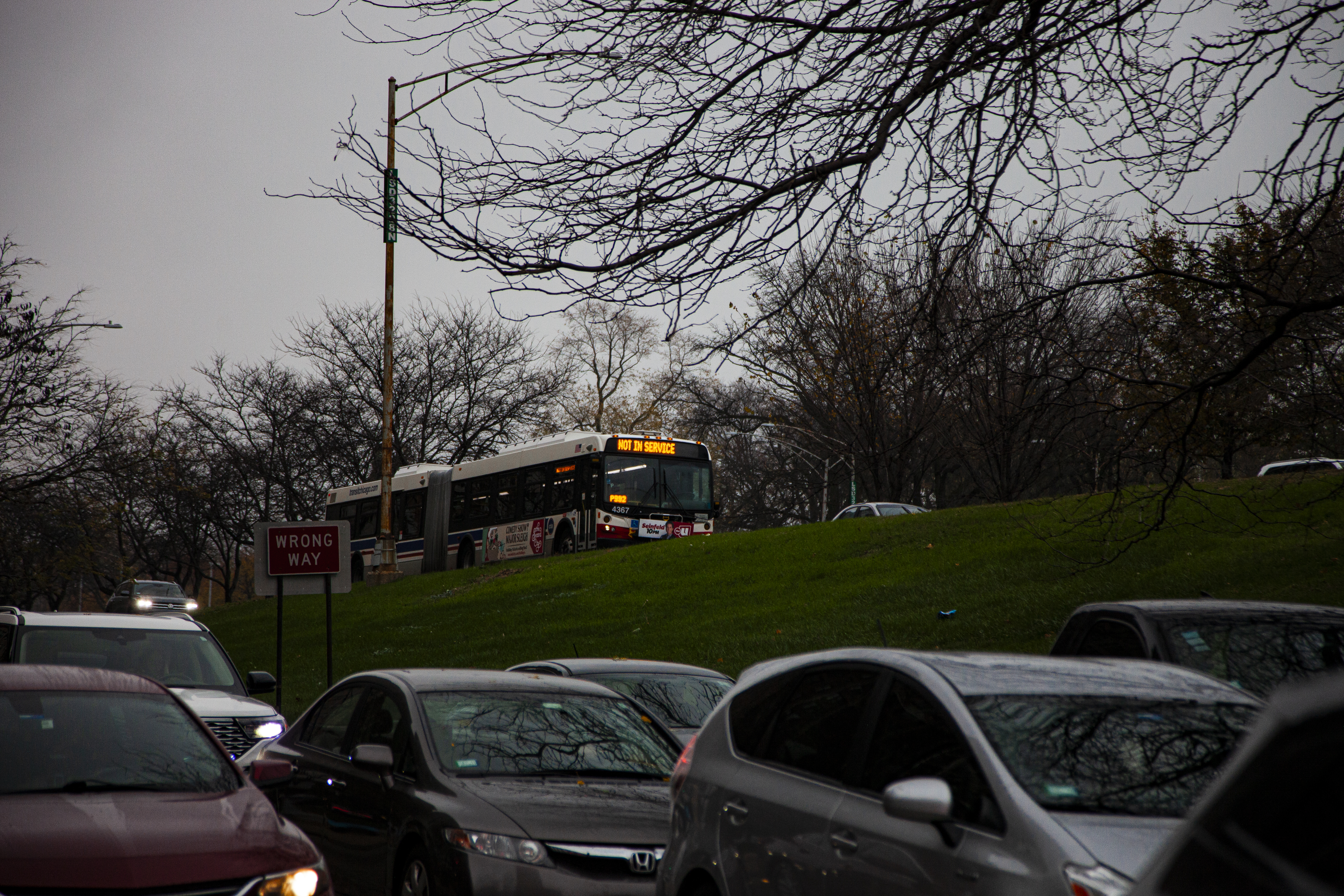
An out of service CTA bus takes Lake Shore Drive, avoiding some street congestion, Thursday, November 14, 2024. This same stretch of Lake Shore Drive is used by 146 buses. (14 East Photo/Elliot Allison)
Express buses could heighten the usability of the network, he said, allowing for faster bus travel than congested neighborhood streets and increasing customer satisfaction. He explained that often people feel safer on buses than on trains, due to the “gatekeeper,” or bus driver. Buses are also cheaper to run with more frequent headways, he said, but boarding and waiting in exposed conditions can be unpleasant.
Schwieterman also expressed some concern regarding the implementation of the BVP amid the end of pandemic relief funding in 2026, but said that shifting routes, digital signage and moving more service to the weekends are all possible with little money.
“I applaud the CTA for doing it,” Schwieterman said. “The system needs a top to bottom review.”
For 2024, the CTA had an operating budget of $1.99 billion and is proposing a $2.16 billion operating budget for 2025. The steady increase in funding helps to keep fares consistent, despite fleet modernization and inflation. The operating budget does not include the additional $6.96 billion Capital Improvement Program which provides funding for planned bus electrification and rail upgrades.
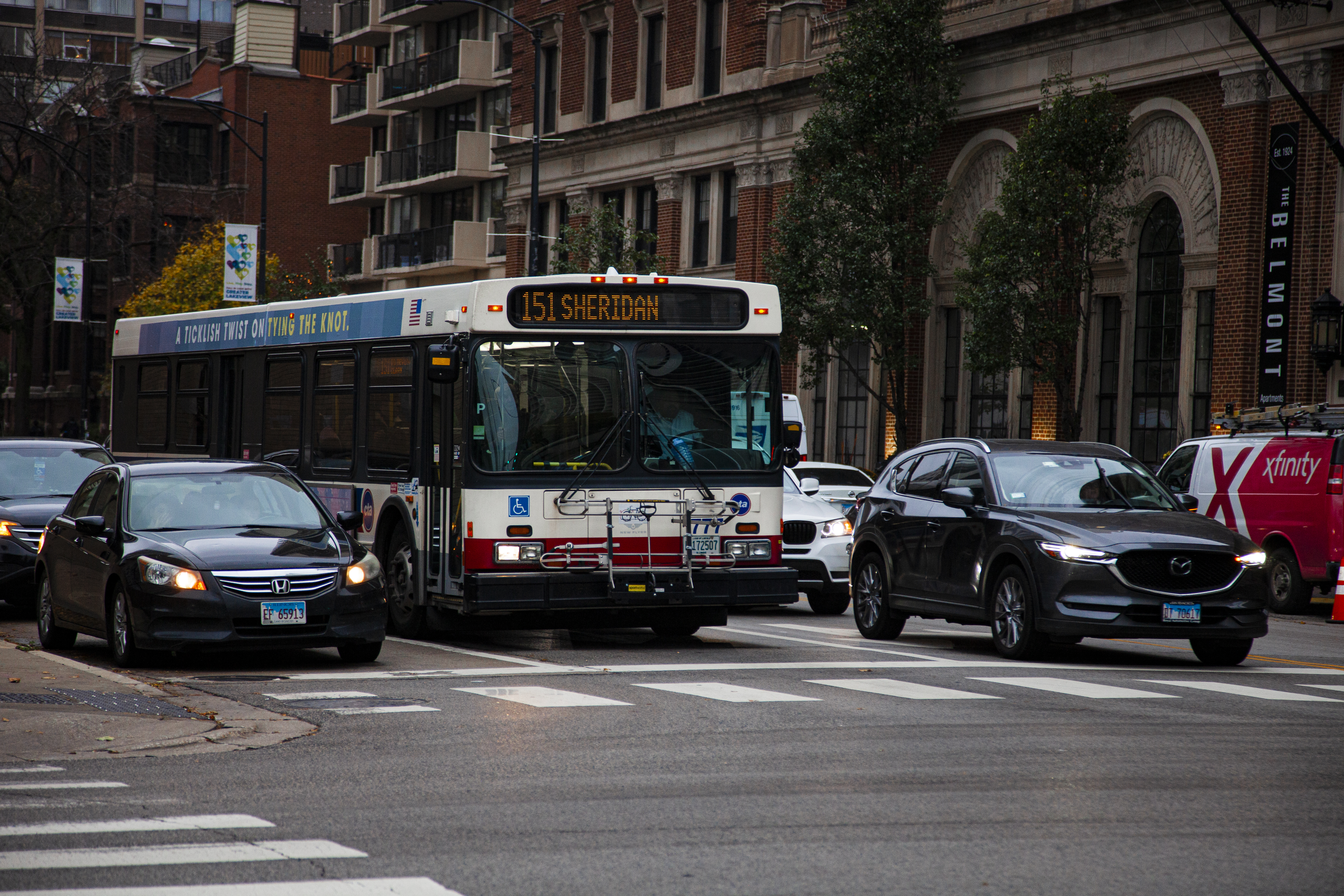
The 151/Sheridan bus waits at a stop light Thursday, November 14, 2024. Portions of the 151/Sheridan route and 77/Belmont route overlap, though each route serves a distinct purpose. (14 East Photo/Elliot Allison)
The CTA Bus Vision report explains that the CTA could make some changes to bus service without any additional funding by restructuring the current bus routes and operating times. Moving buses from routes that overlap to underserved routes is an option to increase service to limited areas, potentially creating more balanced resource spending. It is also possible to reduce the frequency of bus arrivals during peak times, increasing service during other weekday times and on weekends, to provide more consistent service.
Public transportation helps to significantly reduce unequal opportunity within Chicago, and the CTA continues to strive to improve its network.
Header by Elliot Allison


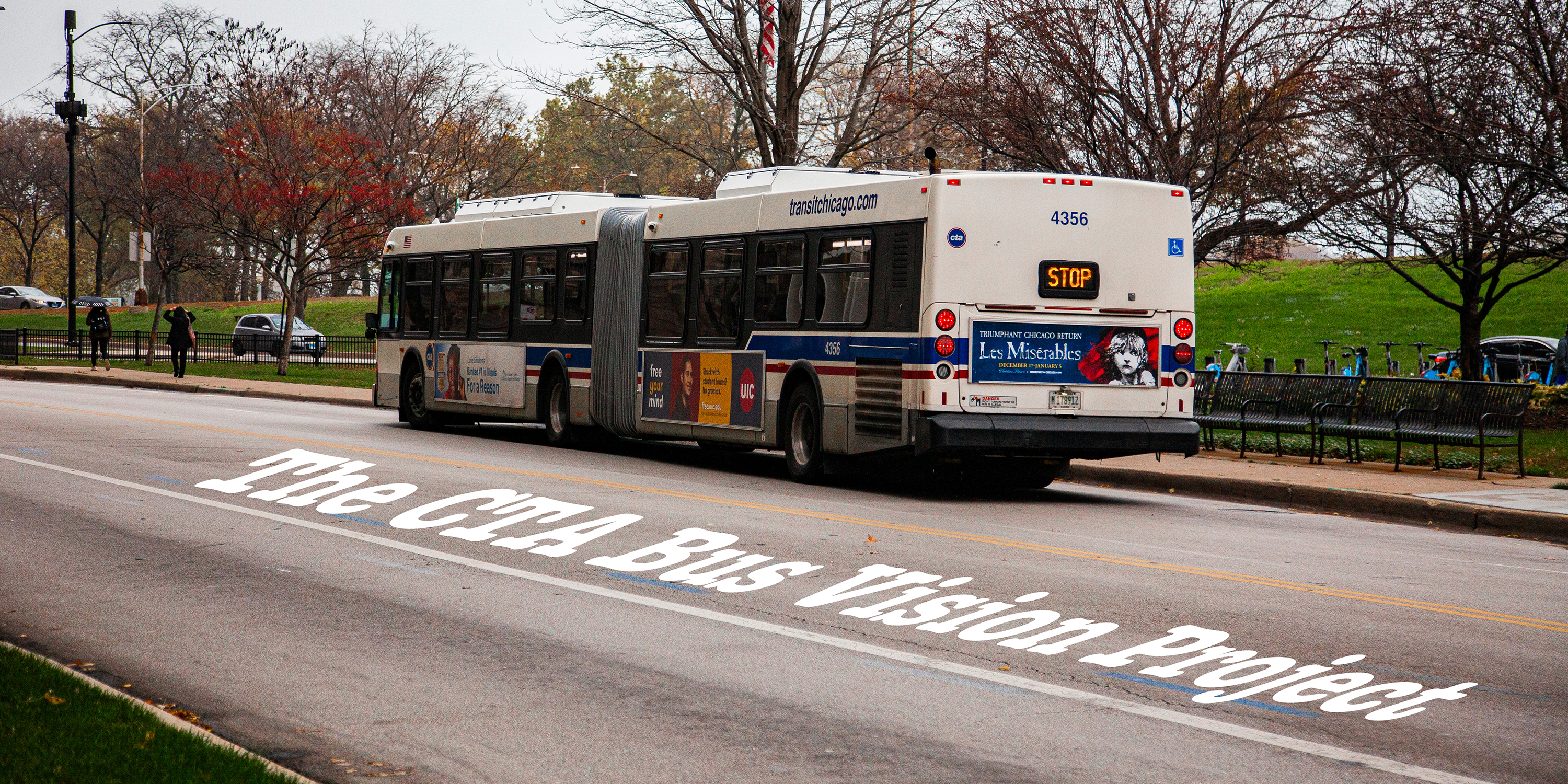

NO COMMENT